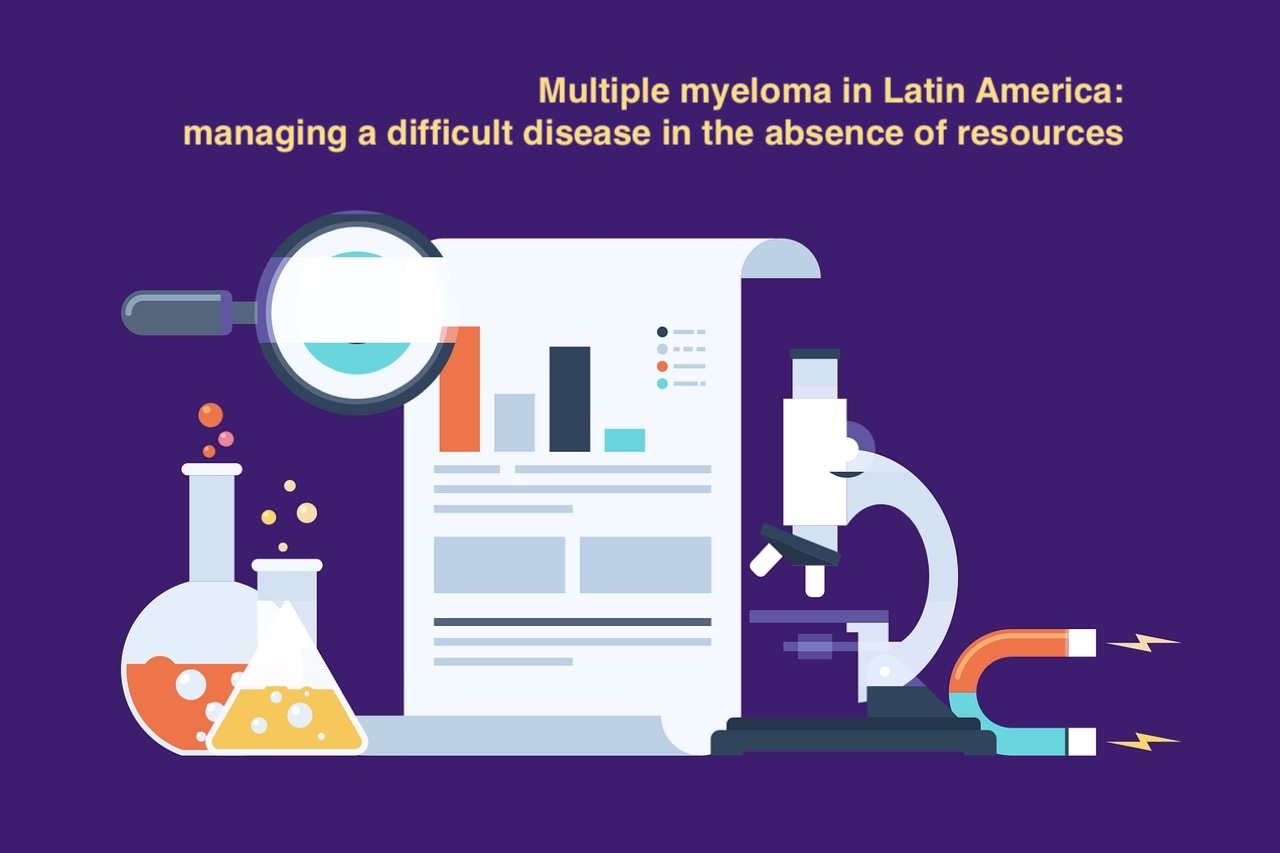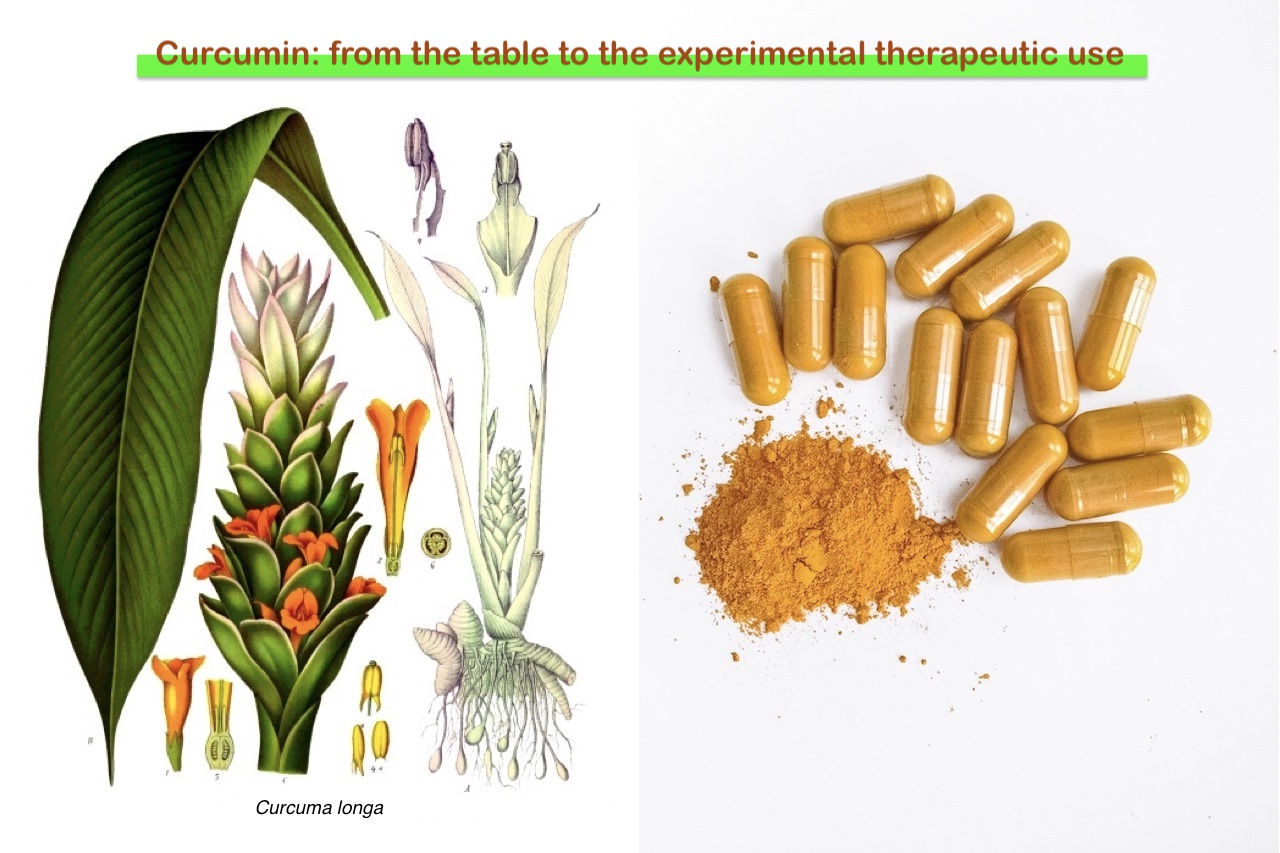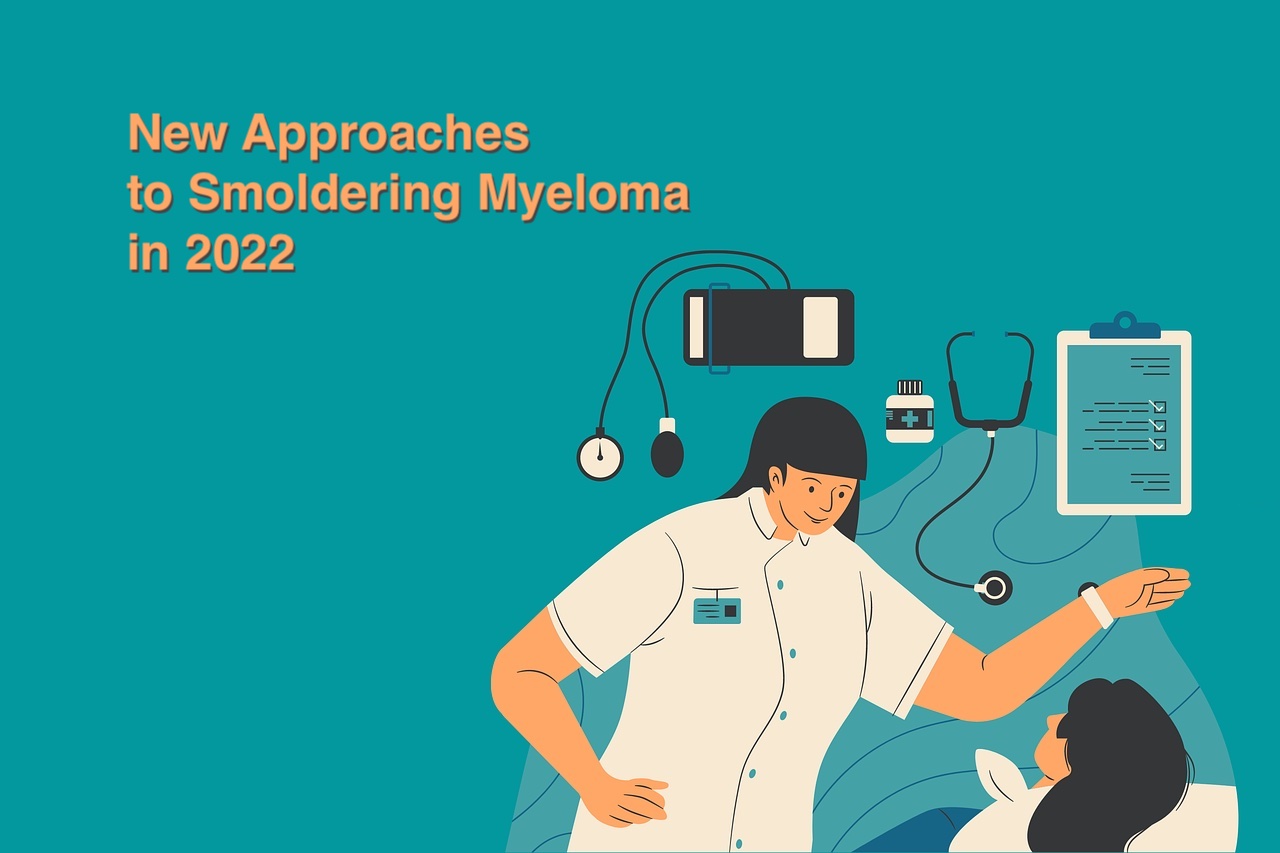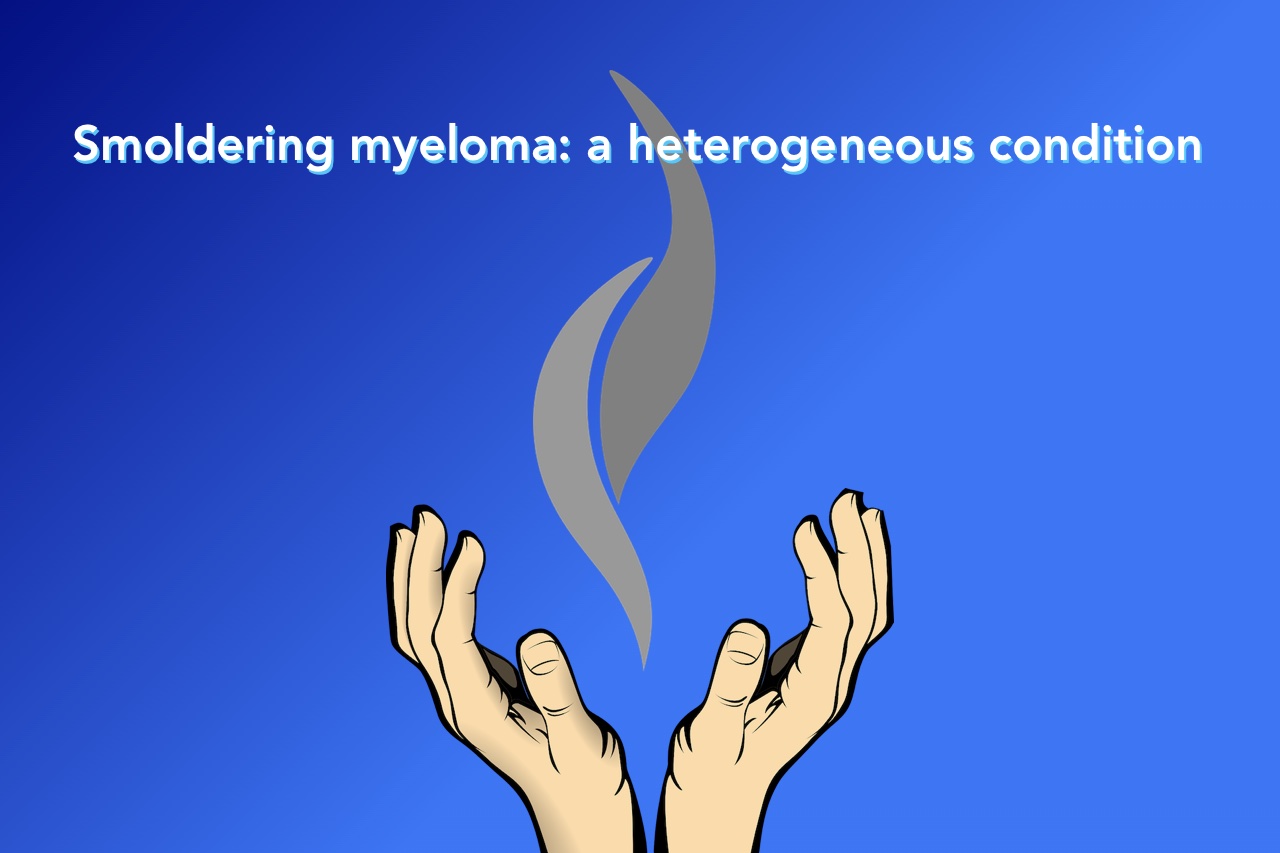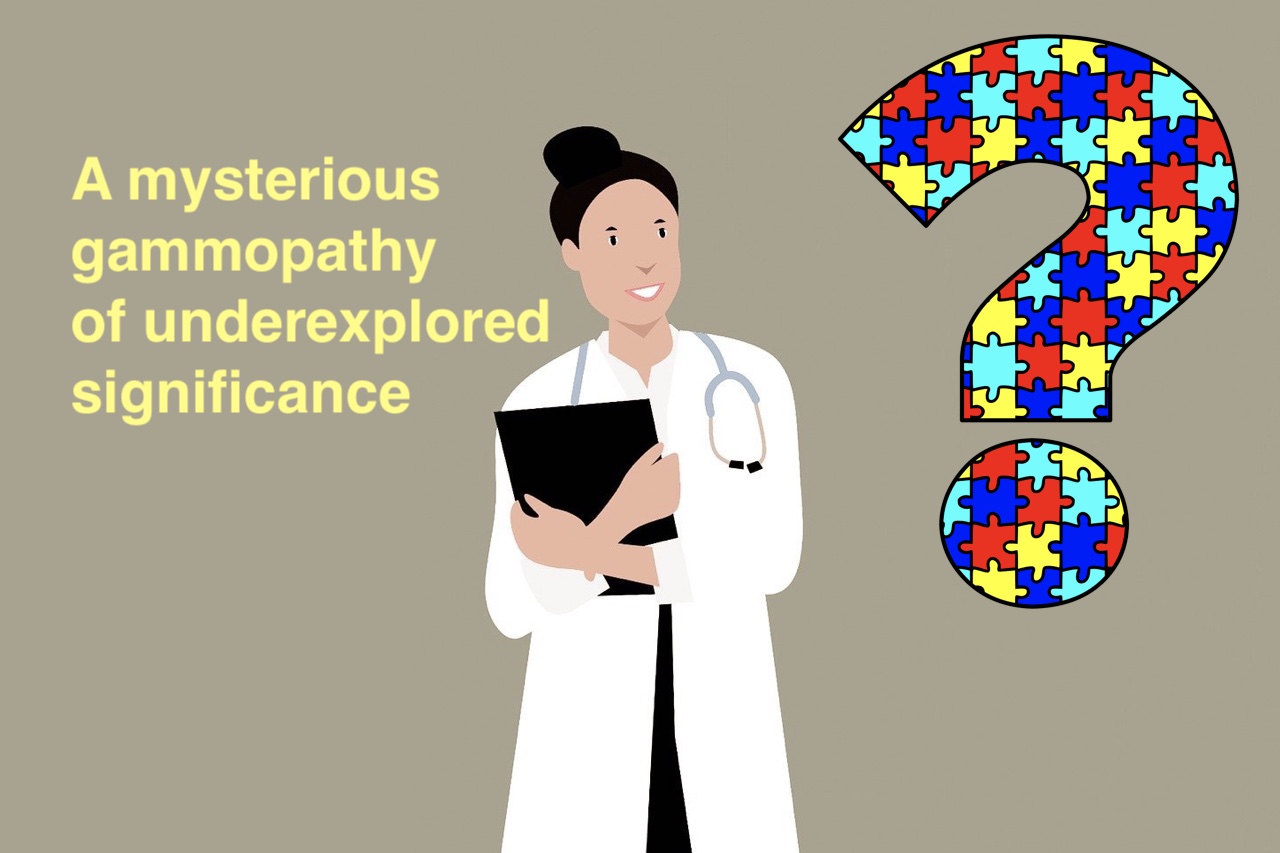Smoldering multiple myeloma (SMM) is an asymptomatic precursor of multiple myeloma, currently not treated with drugs. This subject, apparently easy, is actually very complex and debated, due to lack of solid data about this topic. With this article I would like to show you the position of Ola Landgren, an expert in this field (1). The two main questions about this subject are: What is the most appropriate clinical management of patients with SMM? Shall we treat SMM in the near future?
History of SMM
The first description of SMM dates back to 1980, thanks to the studies carried out by Kyle and Greipp. Indeed, they identified a little number of patients with similar characteristics to multiple myeloma in blood and bone marrow, but without clinical symptoms such as bone lesions or renal failure. The authors understood that these patients needed a chemotherapy, but only a periodic observation.
Definition of SMM
In 2003, the International Myeloma Working Group defined this condition better and proposed 2 important criteria for its diagnosis. either there is presence in the blood of ≥3 g/dL of the so-called monoclonal protein(M-protein) or the presence in the bone marrow of ≥10% of monoclonal plasma cells. Therefore, another crucial criterium, thus the absence of the complications in organ systems, such as bone lesions, hypercalcemia, anemia, renal failure.
SMM management
At the present, the management of SMM consists of monitoring with blood tests every 2 to 3 months for the first year. After that a regular monitoring every 4 to 6 months for 1 year. At this point, if the patient is clinical stable, an evaluation every 6 to 12 months is normally suggested.
Is SMM in truth a homogeneous condition?
Actually, SMM is a really heterogeneous condition. Scientist study it because of the risk for its progression to symptomatic multiple myeloma. Yet in 2007, some studies suggested that patients with SMM could be divided in three risk categories: high-, intermediate-, and low-risk groups for progression. From these important data other researches took place…Indeed, doctors use some criteria to esteem this risk of progression: on one hand the American Mayo Clinic criteria, on the other hand the Spanish PETHEMA criteria.(2), (3)
You could consider three main SMM groups
On Landgren’s Opinion, you should consider three SMM group. First the multiple myeloma, early detection. In this group the time of progression to symptomatic myeloma is short, about 1 or 2 years. In this case an early treatment with drugs would be necessary to prevent the myeloma symptoms, such as bone fracture or renal injuries. The second group is represented by the indolent multiple myeloma: in this case the progression to symptomatic myeloma could take place, but after 5-10 years. For these patients a periodic observation could be enough. Thirdly another condition called SMM- Monoclonal gammopathy: this situation is similar to the other myeloma precursor called MGUS, and the risk of progression to symptomatic myeloma is really low within 10 years of periodic controls.
Options of treatment for patients with high-risk SMM
Many alternatives were proposed by study groups lately. Firstly, drugs used for chemotherapy had lots of secondary effects, thus a treatment of SMM with these heavy drugs could be inconvenient. Other options are available nowadays, less toxic and more efficacious! Just think of what Mateos and colleagues have evaluated in their quite recent trials. They observed that patients with high-risk SMM had important advantages in the situation using two drugs (Lenalidomide and dexamethasone) rather without medical treatment. Indeed, these drugs would delay the SMM progression to symptomatic myeloma and increase the overall survival of these patients. (4)
Future directions
Many questions are being asked by scientists to understand how to move forward in this field. More and more new and safer drugs are going to arrive to be up against high risk patients. To the starting question “Shall we treat SMM in the near future?”, Ola Landgren answers “yes, but only some of them”. The best would be that all the ideas showed in these review article could be endorsed in a consensus document.
Bibliography
(2) Dispenzieri A, Kyle RA, Katzmann JA, et al. Immunoglobulin free light chain ratio is an independent risk factor for progression of smoldering (asymptomatic) multiple myeloma. Blood. 2008;111(2):785-789.
(3) Perez-Persona E, Vidriales MB, Mateo G, et al. New criteria to identify ´ risk of progression in monoclonal gammopathy of uncertain significance and smoldering multiple myeloma based on multiparameter flow cytometry analysis of bone marrow plasma cells. Blood. 2007;110(7): 2586-2592. (4) Mateos MV, Hernandez MT, Giraldo P, et al. Lenalidomide plus ´ dexamethasone versus observation in patients with high-risk smouldering multiple myeloma (QuiRedex): long-term follow-up of a randomised, controlled, phase 3 trial. Lancet Oncol. 2016;17(8):1127-1136.



